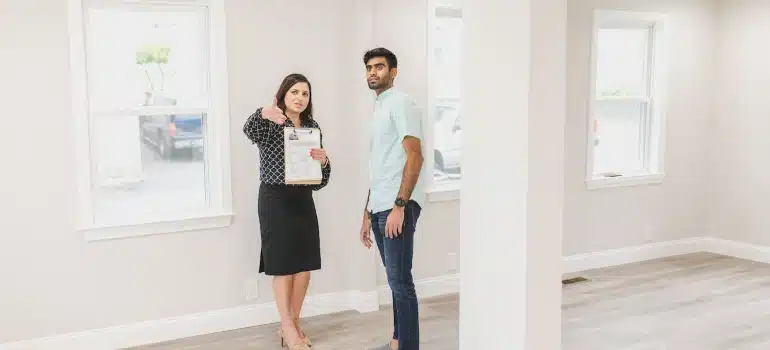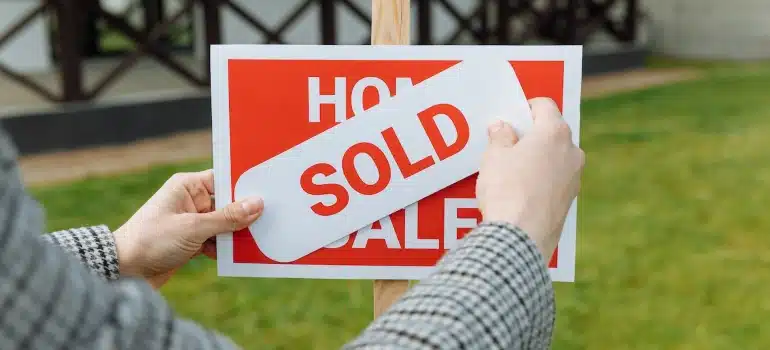Coral Springs real estate: What to expect
Coral Springs often sits in the shadow of Miami, but it has its own appeal. It offers more space, a calmer pace, and still connects easily to South Florida’s major hubs. In 2025, the real estate market is showing signs of cooling, yet interest remains strong from families, professionals, and investors. This guide by longstanding Miami movers provides everything you need to know about Coral Springs real estate, including lifestyle insights, home values, rental trends, neighborhoods, and even commercial property opportunities.
Lifestyle and community in Coral Springs
Coral Springs is located in Broward County, north of Fort Lauderdale. The city covers nearly 24 square miles and is home to over 130,000 residents. It is known for strict zoning and landscaping codes, which help maintain the look and feel of neighborhoods. Its attention to detail supports property values and gives buyers confidence.
The community is diverse, with strong cultural influences from Latin America and the Caribbean. Local dining, shopping, and events reflect this mix. Families value the number of parks, sports facilities, and green spaces spread across the city.
Schools score well in state rankings, and the average commute sits just under 30 minutes. Coral Springs combines suburban living with convenient access to major highways, airports, and coastal areas. If this lifestyle fits your needs, working with trusted moving companies in Broward County makes relocation easier.

Current Coral Springs real estate market snapshot
The residential market in 2025 reflects a period of adjustment. The average home value sits near $530,000. Median listing prices are slightly lower, around $500,000, while recent sales are closer to $600,000. This gap suggests buyers have more room to negotiate. Inventory is climbing, with over 500 active listings available in mid-2025. Homes are staying on the market longer than in the peak years of 2021 to 2023.
For renters, the market is also competitive. Smaller apartments may start around $1,600 per month, while larger units or newer buildings can exceed $2,500. Single-family rental homes often command $3,500 or more, depending on location and condition. While these prices are higher than the national average, demand remains steady thanks to the city’s schools, safety, and amenities.
Overall, Coral Springs offers a more balanced housing market compared to past years. Buyers face less pressure from bidding wars, and renters have a broader selection of units.
What to consider before buying a home
Buying a home in Coral Springs requires more than checking listing prices. Buyers should carefully evaluate costs, location, and lifestyle fit. Property taxes, insurance, and homeowners’ association fees add to the monthly budget. Insurance can be especially significant in Florida, where storm coverage raises costs. A safe rule is to set aside one to two percent of the home’s value each year for maintenance.
Schools, commute times, and access to shopping and healthcare also influence long-term satisfaction. Proximity to top-rated schools often raises property values. Coral Springs’ average commute is just under half an hour, but traffic patterns can vary.
Safety is another key factor. Violent crime rates are low compared to national averages, but property crime is more common in some areas. Buyers should review neighborhood-level data to make informed choices.
Flood risk is another detail not to overlook. Coral Springs is inland, but Florida’s environment makes flood mapping essential. Homes built to modern codes or on higher ground may lower insurance costs.
Renting versus buying in 2025
Renting remains a practical option for people who want flexibility. It is suitable for those not ready to commit or who expect to move within a few years. Renters avoid maintenance and repair costs, but they miss out on building equity. Rising rents also make long-term renting less appealing financially.
Buying offers stability and the chance to grow equity, but it requires a larger financial commitment. Down payments, closing costs, and ongoing expenses add up quickly.
For people planning to stay in Coral Springs for five or more years, buying often makes sense. For those unsure about long-term plans, renting remains the safer choice. Once you decide whether to rent or buy, Coral Springs movers can help you settle quickly.

Best neighborhoods in Coral Springs
The city features a range of neighborhoods suited to different budgets and lifestyles:
- Heron Bay is known for luxury homes with golf and water amenities. Prices here reach the high six and seven figures, appealing to buyers who want exclusivity and space.
- Kensington offers an upper-middle alternative. Homes are more affordable than in the most prestigious neighborhoods but still provide comfort and quality. This makes it a strong choice for families seeking value without sacrificing reputation.
- Eagle Trace is a gated community with 24-hour security and convenient access to major roads. Median prices exceed $1 million, and homes here sell quickly when listed.
- The Isles attracts families with quality schools, parks, and safe streets. Properties are large, often with four to six bedrooms, and priced in the upper-middle range.
- Whispering Woods features estates on large lots, many priced over $1 million. Its scenic setting and quiet atmosphere appeal to buyers seeking privacy.
Other notable neighborhoods include Pine Ridge and Crossings. Both provide solid homes at lower entry points, making them appealing for mid-range buyers. For moves into premium areas like Heron Bay or Eagle Trace, white glove moving companies in Florida handle valuable belongings with care.
Commercial real estate in Coral Springs
Commercial Coral Springs real estate plays a growing role in the city’s development. It has more than 600,000 square feet of commercial space across retail, office, and industrial properties. Lease rates average around $24 per square foot, though costs vary by property type.
Industrial and warehouse spaces benefit from strong demand across Broward County. Vacancy remains low, and rents hover near $15 per square foot. Retail is anchored by neighborhood centers and larger plazas, while the downtown redevelopment plan aims to create a mixed-use hub with offices, shops, and residential units.
Investors should note that many commercial buildings are older and may need upgrades to attract tenants. However, this also creates value-added opportunities. Properties near major roads or redevelopment zones hold strong long-term potential.
Coral Springs is not a core commercial hub like Fort Lauderdale or Miami, but its growth trajectory makes it attractive for businesses seeking lower costs with suburban reach. Businesses expanding into Coral Springs often rely on commercial movers in Miami to set up offices smoothly.
Real estate as an investment
Investors in Coral Springs can choose between residential and commercial opportunities. Residential demand remains strong thanks to schools, safety, and amenities. Rental yields are moderate, but homes in well-regarded neighborhoods tend to hold value. The risk comes from fluctuating interest rates and insurance costs.
Commercial properties offer higher returns but also higher risks. Industrial and retail spaces can generate stable income through long-term leases. Mixed-use developments and properties near the downtown project may deliver strong appreciation. Challenges include tenant turnover, zoning restrictions, and economic cycles.
For many investors, a balanced approach makes sense. Owning a rental home provides steady income, while a small stake in commercial property adds growth potential.

How to budget for a home purchase
Budgeting for a home in Coral Springs starts with reviewing your income, savings, and credit score. From there, calculate how much you can afford monthly after accounting for mortgage payments, taxes, insurance, and HOA fees. Do not stretch your budget to the maximum mortgage you qualify for, as this leaves little room for emergencies.
Work with lenders to lock in favorable rates and explore different loan options. Keep a reserve fund for local movers in Florida, and especially repairs, because the weather here can create unexpected costs. If possible, negotiate with sellers for closing credits or inspection repairs. The market’s current cooling trend makes these concessions more common in 2025.
Property taxes in Coral Springs
Property taxes in Coral Springs directly influence affordability. In 2025, the effective property tax rate in Broward County averages about 1.08 percent of assessed home value. For a home priced at $530,000, this equals roughly $5,700 per year. That figure can vary depending on exemptions, such as the Florida homestead exemption, which reduces taxable value for primary residences.
Compared to other Florida cities, Coral Springs property taxes sit in a moderate range. Rates are lower than in places like Fort Lauderdale or Miami, where higher millage rates push annual bills upward. However, they are higher than in some smaller Florida counties. Buyers should also factor in special assessments for schools or city projects, which may appear on annual bills.
When budgeting, it is smart to project slightly higher property tax costs over time. Rising home values or local rate adjustments can increase annual payments. Reviewing the property’s tax history before making an offer gives you a clear picture of expected costs.
Other financial factors shaping Coral Springs’s real estate in 2025
Beyond prices and neighborhoods, several practical details can shape your decision in 2025:
- HOA fees and rules – Many communities in Coral Springs are HOA-governed. Fees typically range from $100 to $350 per month. Rules often cover exterior design, landscaping, pet ownership, and rental permissions.
- Insurance costs – Florida homeowners face higher insurance premiums than the national average. In Coral Springs, expect to pay $3,000 to $5,500 per year for a standard policy. Modern builds and hurricane-resistant features can lower rates.
- Property taxes – The effective property tax rate in Broward County averages 1.08 percent. On a $530,000 home, this equals about $5,700 annually. Primary residents may qualify for the Florida homestead exemption, which reduces taxable value.
- Financing environment – Mortgage rates remain higher than the pre-pandemic lows. In 2025, 30-year fixed rates in Florida average 6 to 6.5 percent. Buyers sometimes use buydown programs or adjustable-rate mortgages.
- Future development – The Cornerstone Downtown Coral Springs redevelopment will bring new retail, dining, and office space. This project is expected to boost demand for nearby residential and commercial properties.
- Investor metrics – Rental yields in Coral Springs average 5 to 6 percent for well-located single-family homes. Apartments and townhouses trend slightly lower, while luxury properties yield less but often appreciate faster. Commercial leases average $24 per square foot, with industrial properties closer to $15 per square foot.
- Moving logistics – Demand for movers is seasonal, with peak activity in late spring and summer. Booking long-distance movers in Florida at least eight to twelve weeks in advance in advance is recommended.
These financial factors show that Coral Springs’s real estate decisions go far beyond listing prices. Looking at these elements together gives a clearer picture of affordability and helps you make informed choices in 2025.
Coral Springs real estate compared to nearby markets
Fort Lauderdale offers more nightlife and density but comes with higher costs and congestion. Boca Raton and Palm Beach feature luxury real estate, often pricing out mid-range buyers. Miami suburbs attract investors chasing appreciation, but the volatility can be higher. Coral Springs offers stability, good schools, and a family-friendly environment, often at more reasonable prices than coastal markets.

Practical steps to buying or investing
Approaching the Coral Springs market requires a clear plan. Define your goal first: are you buying a primary home, investing in a rental, or exploring commercial opportunities? Next, organize your financials, check your credit, and get pre-approved. Research market data and visit neighborhoods in person to get a sense of daily life.
Once you shortlist properties, run cost scenarios to include taxes, homeowners’ and moving insurance, and upkeep. Negotiate carefully, as sellers are more flexible now than in recent years. Complete all inspections and due diligence before closing, especially for older properties. If investing, decide whether you will self-manage or hire a professional property management.
Key takeaways for Coral Springs real estate in 2025
Coral Springs real estate in 2025 reflects both opportunity and caution. The residential market has cooled, with rising inventory and longer listing times giving buyers more leverage than in past years. Families continue to be drawn by schools, safety, and a strong sense of community, while investors see value in neighborhoods that balance affordability with long-term growth.
On the commercial side, demand for industrial and mixed-use properties is steady, though investors need to factor in higher borrowing costs and the potential need for upgrades in older buildings. Property taxes, insurance, and maintenance add significant weight to the decision, making careful budgeting essential.
For anyone considering Coral Springs real estate, the choice comes down to clarity of goals. If stability and community rank high, the city offers many strong residential options. If diversification and income potential are priorities, select commercial opportunities may fit. In either case, Coral Springs stands out as a practical and well-rounded market in South Florida.
